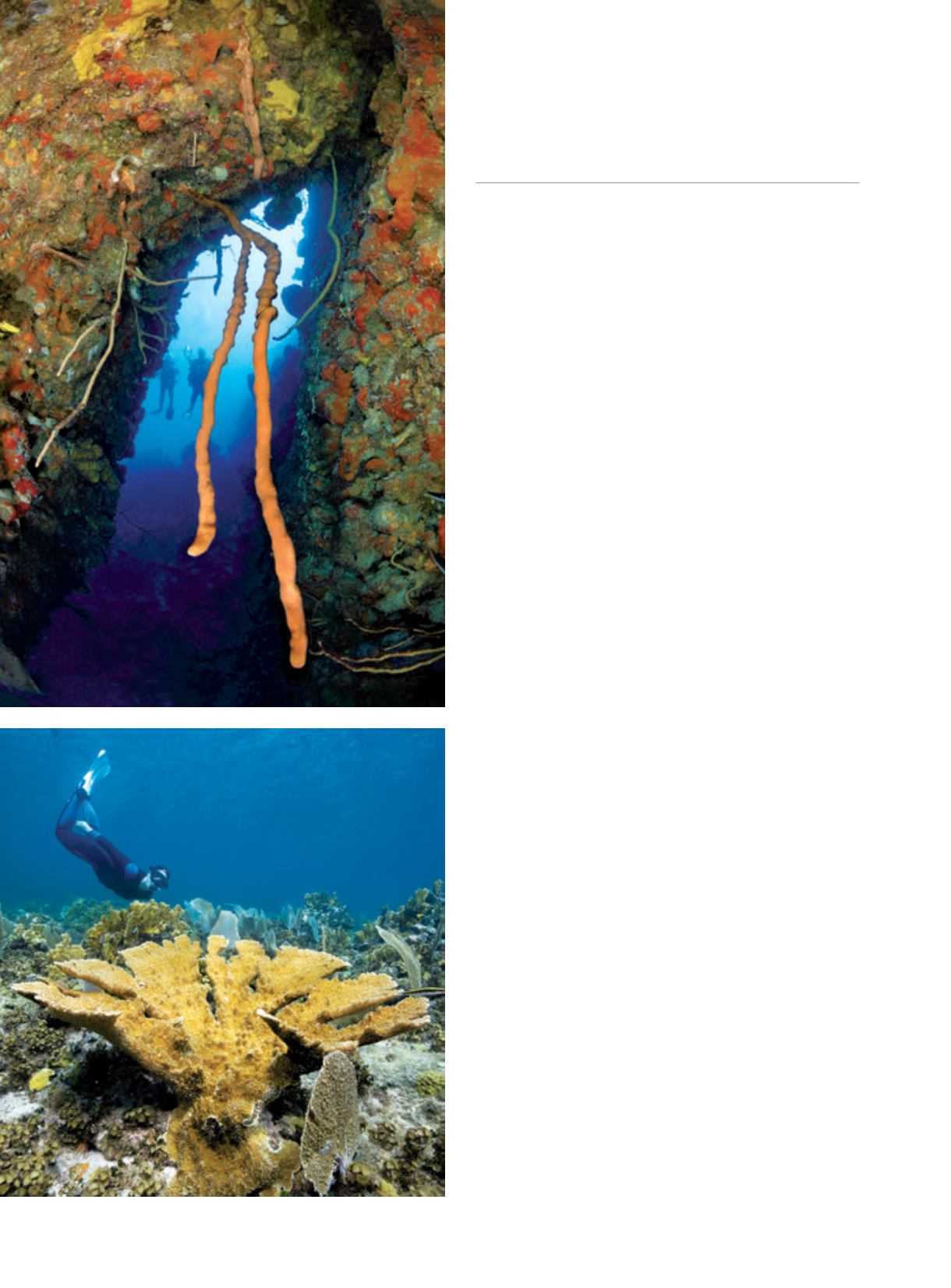

86
|
WINTER 2017
sightings (hence the name) as the animals swoop in to
root for small crustaceans buried in the sand.
While most Jackson Bight sites feature a large coral
buttress along the seaward edge of the wall,
Cumber’s Caves
is different. It has the usual large sand plain on the shoreward
side, but this one is populated by hundreds of garden eels.
Southern stingrays cruise in a tireless search for invertebrates
they can suck from the sand. The site gets its name from a
series of what must have been sand chutes exiting the wall
but eventually were overgrown with coral at the top, creating
a series of swim-throughs that begin at 40 feet and exit the
wall at 60 to 120 feet. Some of the caves are rather bland, but
others are colorfully decorated with sponge, which makes for
stunning wide-angle photos (assuming you are quick enough
to get your shot before the particulate raining down from
your exhaust bubbles creates a storm of backscatter).
The Sister Islands’ most famous sites are those along the
Bloody Bay Wall, and their fame is well deserved. Their
names are carved into our collective consciousness and
passed along from diver to diver when recalling the great
wall dives of the Caribbean. At
Three FathomWall
(also
known as
Mixing Bowl
) the wall starts (as you would
expect) at 18 feet, where a large cleft in the wall divides
Jackson Bight to the east and Bloody Bay to the west. Big
schools of grunt surround star corals here, and vibrant
sponge dot the wall, even at 40 feet and shallower. At
Hole
in the Wall
the vertical precipice is replicated (a bit deeper
here at around 24 feet), but there is a large open passageway
that begins shallow and exits on the wall at 65 feet. This is
the site’s namesake structure. Numerous cleaning stations
provide access to typically skittish fish such as the tiger
grouper, and like almost any site along Bloody Bay Wall,
green sea turtles are common.
Randy’s Gazebo
also has a
swim-through chimney that exits on the wall, but its most
notable feature is a highly decorated coral condominium on
a ledge seaward of the wall face.
No matter which of the dozens of Bloody Bay sites you
dive, the common denominators are abundant marine life
and, just as significantly, friendly fish. This is an artifact
of decades of protection in Bloody Bay Marine Park. The
grouper will swim right up to your face mask, totally
unafraid, and the turtles will, too. Perhaps this is why it
has become so popular for underwater photography. They
say if it were easy, everyone would do it. Well, it is here,
and they do.
AD
From top:
The overgrown reef offers dramatic swim-throughs
along both Bloody Bay and Jackson Bight on Little Cayman. The
south sides of both Cayman Brac and Little Cayman offer isolated
concentrations of nicely intact elkhorn coral.
Opposite:
Bloody Bay Wall on Little Cayman is famous for its
tame, charismatic Nassau grouper.


















